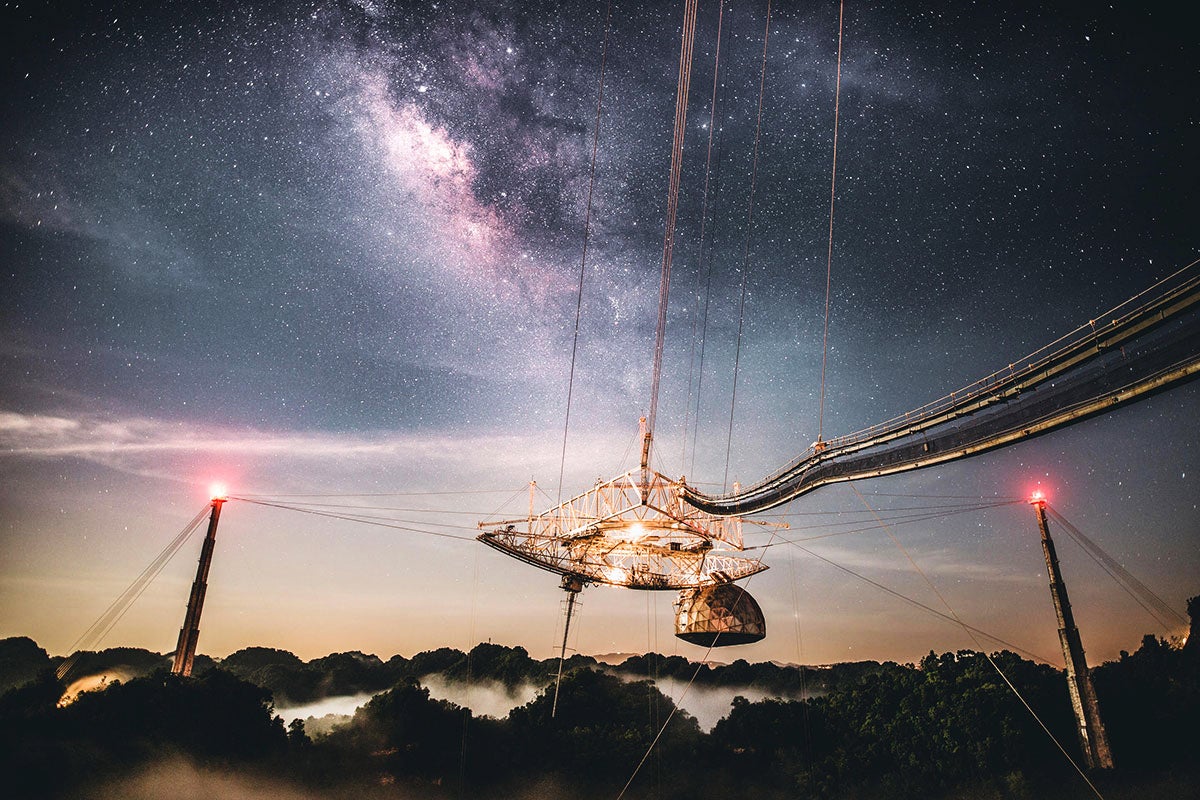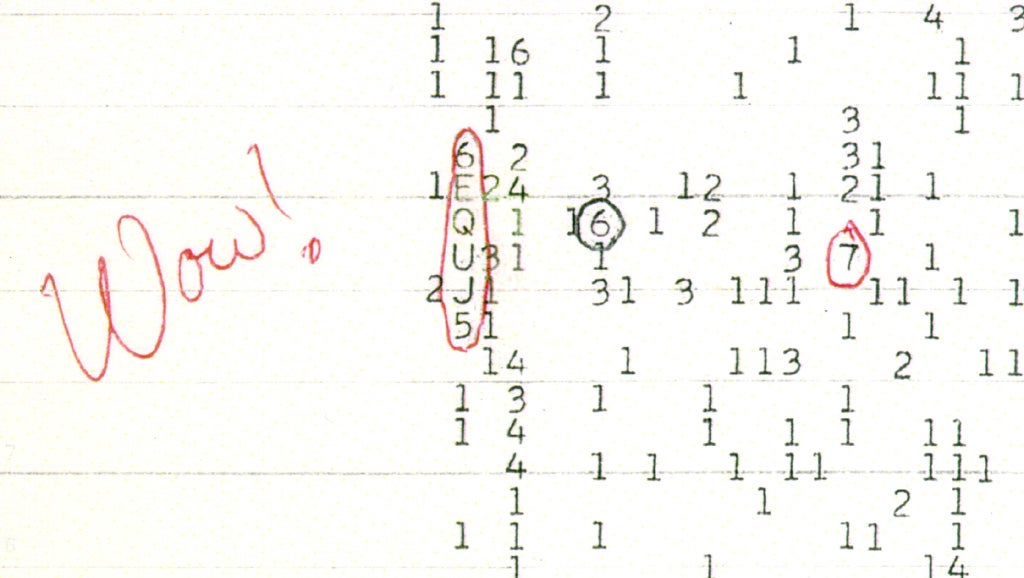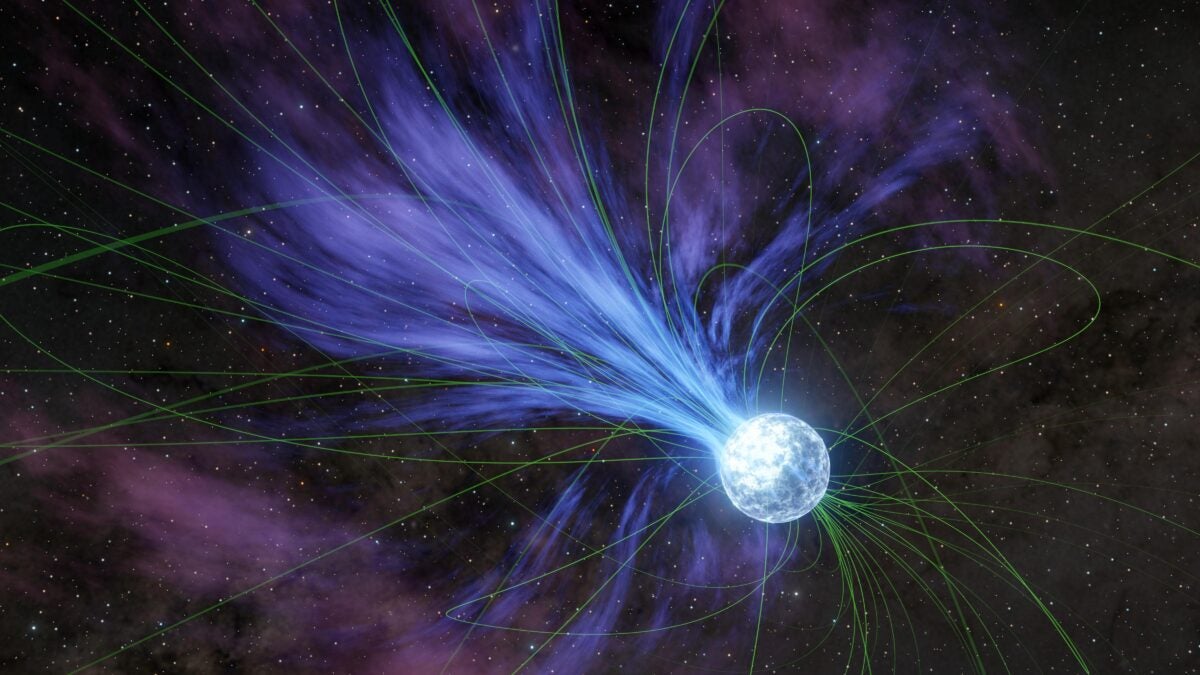
One of the most enduring mysteries in astronomy may have just been solved — and sorry folks, it’s not aliens.
In a paper posted last month to the arXiv preprint server, a team of astronomers report they may have finally found the source of the Wow! Signal.
Overnight on August 15, 1977, the Big Ear Observatory at Ohio State University picked up a mysterious deep space signal. It was right where members of the Search for Extraterrestrial Intelligence (SETI) community had been looking, and was recorded over the course of 72 seconds. The signal was powerful, but it disappeared into the night. It was never heard from again — a disappointment to SETI astronomers who think signals from other civilizations may repeat like a beacon, signaling aliens trying to perform some cosmic outreach efforts.
Jerry Ehman, an Ohio State astronomer, found the data on a printout the next morning, and circled it, writing the word “Wow!” Since then, it’s come to be called the “Wow! Signal,” and has remained one of the few unexplained SETI signals to resist further scrutiny. The source has never fully been explained, though explanations of varying veracity have come up over the years.

.
But Abel Mendez of the Planetary Habitability Laboratory at the University of Puerto Rico at Arecibo and his colleagues at the Harvard-Smithsonian Center for Astrophysics and the University of Antioquia in Medellín, Colombia, looked into data from a multiyear study of the night sky. Specifically, data from February to May 2020 taken at the now-defunct Arecibo Observatory conjured up what might be called “mini-Wow! Signals.” They were at the same place on the electromagnetic spectrum as the original signal (the so-called “hydrogen line”) but energetically much, much weaker.
And these signals fit the profile of an already extant phenomenon: cold hydrogen clouds. These clouds are groups in space of atomic hydrogen that exist all over the universe. Through various atomic interactions, they give off radio signals. Early radio astronomers were able to map the spiral arms of the Milky Way by tracing cold hydrogen clouds, so they’ve been known for decades. But none of them are quite powerful enough to fit the profile of the Wow! Signal. Unless something gave them a little boost.
A boost of energy
Enter the magnetar. Magnetars are a kind of neutron star that spins like a pulsar (a neutron star that spins such that radio waves leak out in beams like a cosmic lighthouse) but also has a strong magnetic field, making these dense remnants of stars loud and powerful. They may also be, with that much energy compacted, quite prone to violent outbursts.
In this case, a flare from a pulsar may have sent out a maser —a beam of concentrated microwave energy much like a laser — that eventually came in contact with a cold hydrogen cloud. That took the natural hum of the cold hydrogen cloud and amplified it into extremes powerful enough to appear like a beacon from a distant civilization.
“When you calculate the emission line and the temperature, it just makes sense that those are clouds — those are common clouds that are everywhere,” Mendez says.

So why wasn’t this hypothesis conjured in 1977? Magnetars, at that time, hadn’t been discovered. By some accounts, what we now know as a magnetar hadn’t even been hypothesized until 1992. Few, if any, astronomical sources known at the time could have emitted a maser. The initial research on the Wow! Signal hinted at a hydrogen cloud possibly being a culprit, but didn’t understand how one had gotten so loud in radio.
“Things to trigger this phenomena like magnetars were later known, so wasn’t that easy to connect the dots at that time,” Mendez says.
The paper is currently undergoing revisions for submission to The Astrophysical Journal. The initial paper was a way to aggregate expert feedback on the individual intersections of astronomy: magnetar experts, maser experts, cold hydrogen cloud experts, and even SETI astronomers. Like many papers posted to the arXiv preprint server, the authors hoped to get community feedback to strengthen the paper before submitting a draft to a journal. SETI astronomers were “people that I was a little worried about, with destroying the Wow! Signal … but no, they’re fine with that,” Mendez says. He says this list even included Robert Dixon, one of the original astronomers to work on the Wow! Signal.
So this confirms what most have believed since 1977: We have no real clues that point to the presence of aliens in our galaxy. But future radio surveys could find more signals like this and gain a better understanding of magnetars, a topic of research that’s relatively new. Magnetars are also the possible culprit behind other enigmatic radio signals like fast radio bursts. While the explanation for the Wow! Signal may not be aliens, it does present a fascinating new phenomenon for astronomers to dissect.









